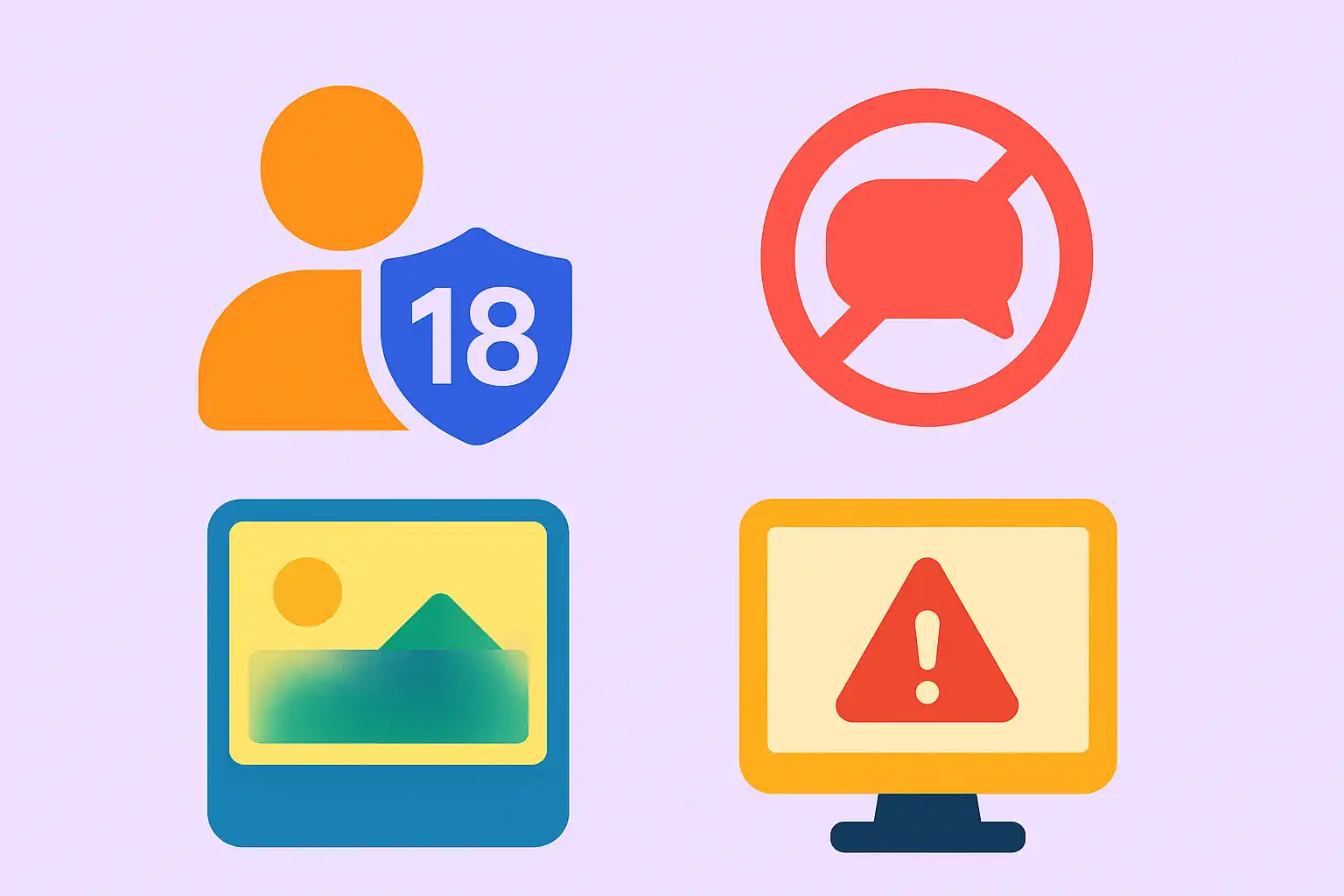Teen-focused rules arrive on Facebook: what it means for marketers
Meta just brought Instagram's teen safety measures to Facebook and Messenger. Here’s how brands should update their approach.

Meta is extending its suite of teen protection features—previously limited to Instagram—across Facebook and Messenger.
These changes introduce tighter restrictions on messaging, stronger content moderation, and new AI-powered safeguards designed to limit exposure to inappropriate interactions and material for users under 18.
The updates directly impact how marketers, influencers, and brand teams engage with teen audiences across Meta’s platforms.
As teen-targeted strategies come under closer scrutiny, marketers must adapt quickly to stay compliant and effective under these new standards.
Short on time?
Here’s a quick breakdown of what’s ahead:
- Meta restricts teen messaging, blurs sensitive content, and adds AI-powered safety prompts.
- Global regulators push for stricter youth protections, prompting Meta’s platform-wide updates.
- Marketers must adjust messaging, visuals, and influencer choices to stay compliant.
What’s changing across Facebook and Messenger
Meta is rolling out the following changes for all users under 18:
- Default messaging restrictions: Teen users can no longer receive direct messages from people they don’t follow or aren’t connected to.
- Content filtering: Photos containing nudity or other age-sensitive content will be blurred by default, with AI assisting in detection and moderation.
- Proactive safety prompts: The platforms will detect patterns of potentially inappropriate conversations between teens and adults, prompting teens to report, block, or exit the chat.
The features mirror protections already active on Instagram and are now being enforced consistently across Meta’s core communication products. All teen accounts will be subject to the new default settings, regardless of region.
The regulatory backdrop behind Meta’s shift
The expanded safeguards come amid increasing global scrutiny of how social platforms handle youth engagement. Regulatory bodies in the United States, European Union, and Asia-Pacific are demanding stricter defaults and more transparent safety protocols for underage users.
By rolling out uniform teen protections across its platforms, Meta aligns with emerging expectations around responsible platform design. The update also reduces legal exposure related to privacy, content moderation, and child protection, especially in high-risk markets.
Marketers engaging teens on Meta products must now consider these platform-wide shifts as part of broader compliance planning.
How marketers should adapt
The new safeguards limit reach, direct contact, and content exposure for underage audiences across Meta platforms. Brands that regularly engage teen segments should revise audience targeting, messaging strategies, and influencer partnerships to reflect these changes.
- Limit dependency on direct messaging Messenger-based outreach to teens will now require pre-established connections. Marketing teams must prioritize opt-in campaigns and content strategies that encourage teens to initiate interaction.
- Review visual content policies AI-driven moderation may suppress or blur creative content flagged as sensitive. Visual assets used in campaigns should meet new platform standards to avoid reduced visibility.
- Reassess influencer alignment Teen-targeted influencers will need to verify that their audience profiles remain compliant with Meta’s updated visibility settings. Partnering with influencers who primarily reach users aged 18 and above may offer greater stability.
- Use analytics to monitor audience segmentation Social media tools like Brandwatch, Sprout Social, and Influencity can help track audience age ranges and ensure ongoing compliance with Meta’s evolving platform rules.
- Document communication protocols Internal teams should align on how underage engagement is tracked and reported. Documented workflows for age-appropriate content and contact protocols will support compliance reviews and platform audits.
Meta’s latest update signals a platform-wide recalibration of how teens are engaged, messaged, and protected.
For brands, the shift increases operational complexity but also provides clear guardrails for compliant communication.
With stricter standards becoming the norm across digital channels, marketers who prioritize transparency and adaptive planning will be better positioned to maintain trusted audience relationships.
Source
Siddiqui, F. (2025, April 8). Meta expands ‘Teen Accounts’ to Facebook, Messenger amid children’s online safety concerns. Reuters. https://www.reuters.com/sustainability/meta-expands-teen-accounts-facebook-messenger-amid-childrens-online-safety-2025-04-08


